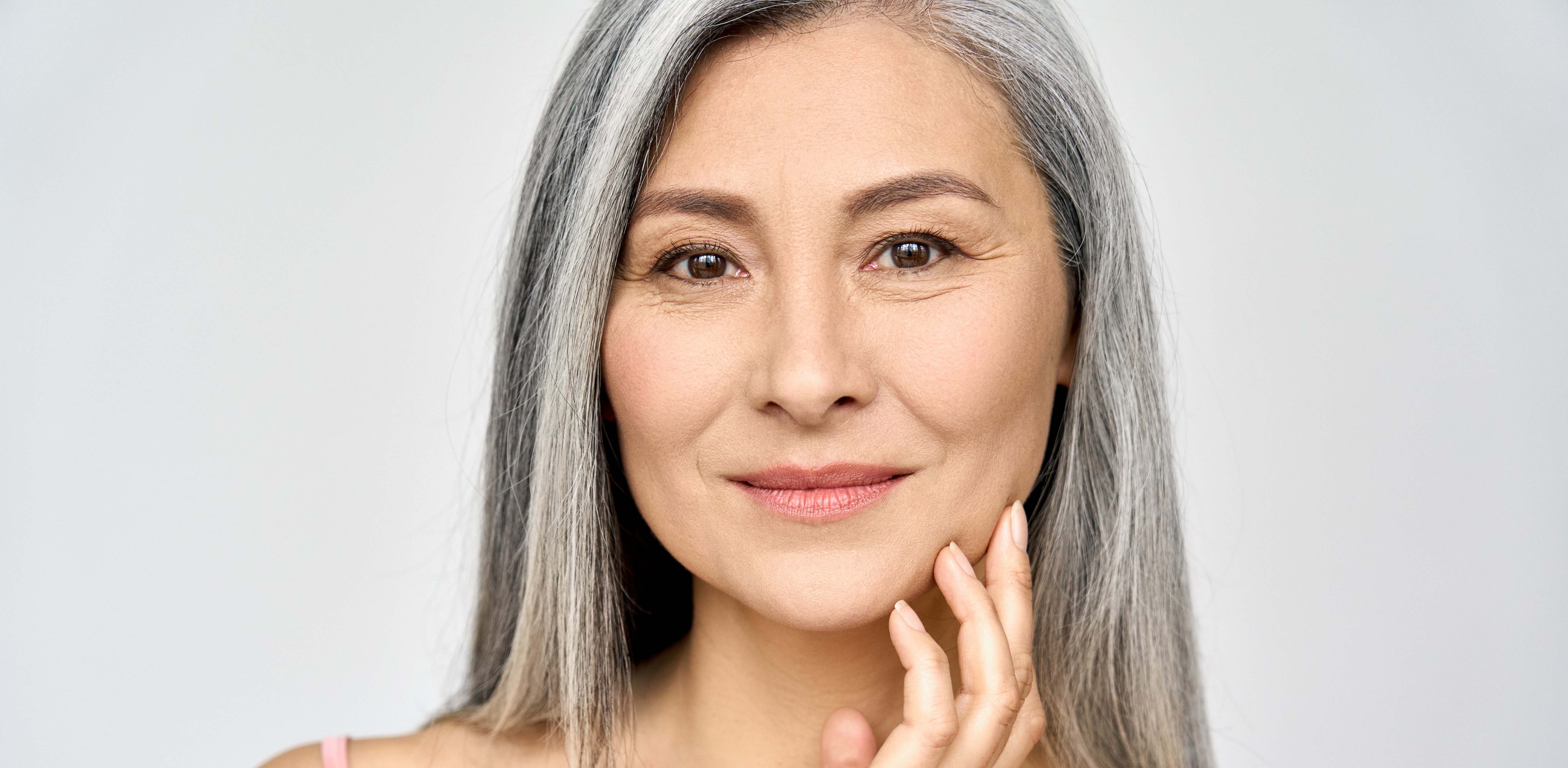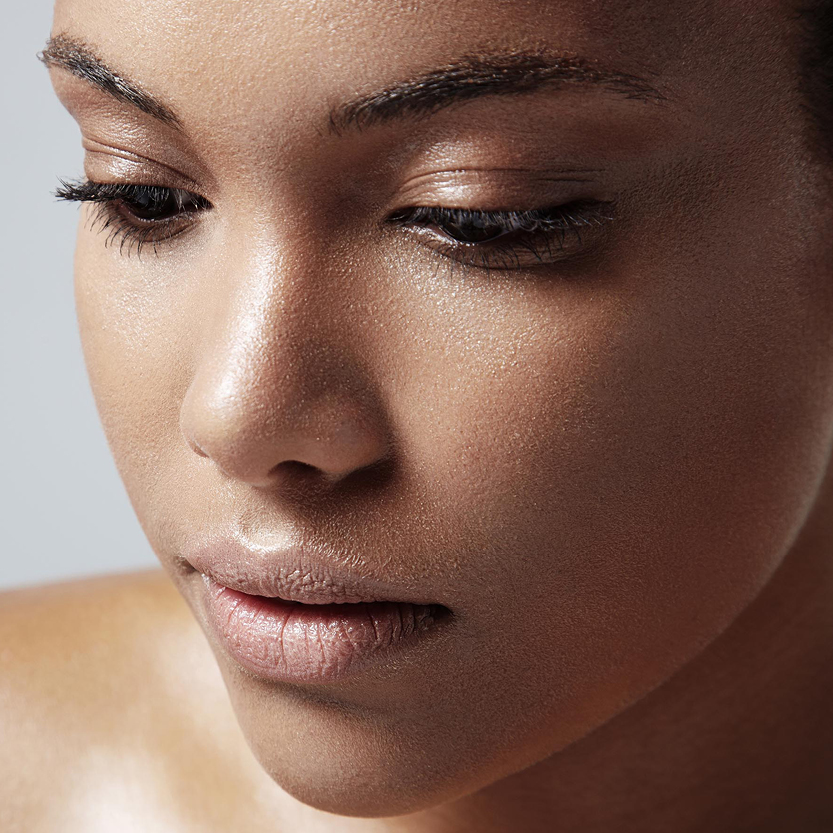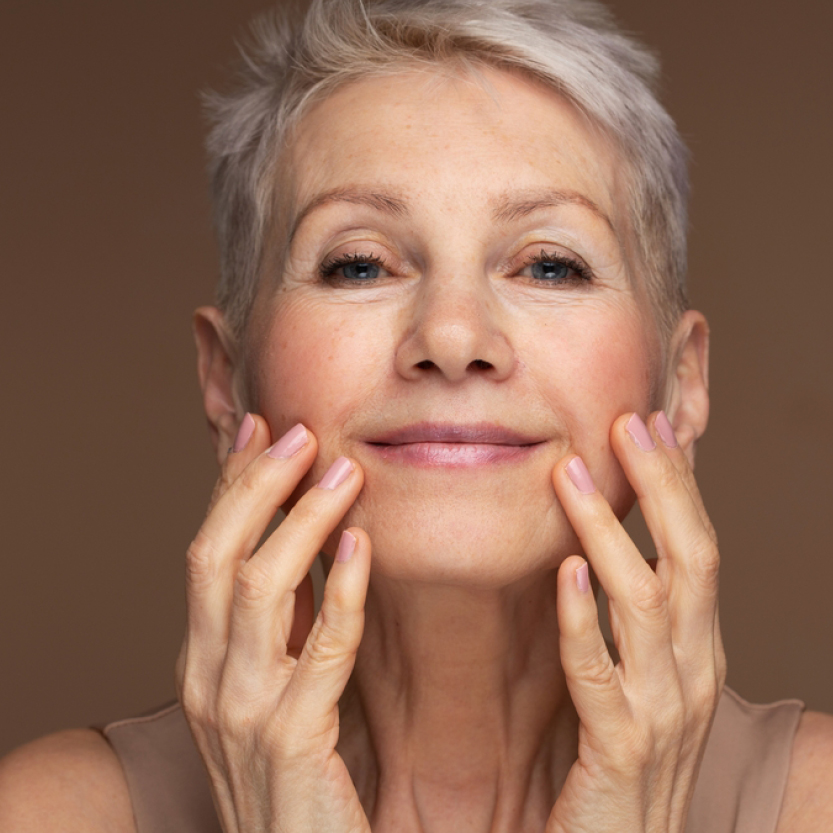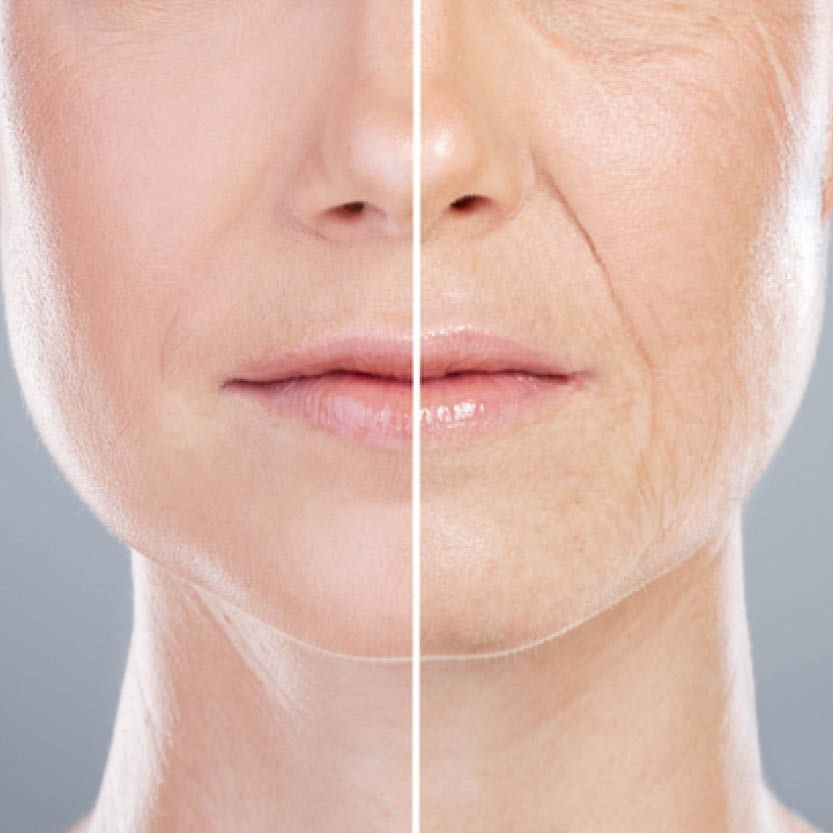As we age, a combination of internal and external factors gradually changes our appearance. One of the earliest signs is the decline in collagen and elastin—proteins that keep skin firm and elastic. With less of these, the skin sags and wrinkles form. At the same time, cell turnover slows, making the complexion appear dull and uneven.
Beneath the skin, fat pads that once gave our face volume shrink and shift, causing hollows and deeper folds. Even the bones of the face begin to recede, reducing the structural support that once kept features youthful. Years of repeated facial expressions also leave permanent lines, as aging skin loses its ability to recover.
External influences accelerate this process. Sun exposure is the leading cause of premature aging, damaging skin cells and triggering pigmentation and wrinkles. Lifestyle choices like smoking, poor diet, stress, and lack of sleep also speed up the aging process by increasing inflammation and oxidative stress.
Hormonal shifts, particularly during menopause, further reduce skin hydration and elasticity, making sagging more noticeable. Together, these factors explain why our faces change over time — and why understanding them is key to effective prevention and treatment.






